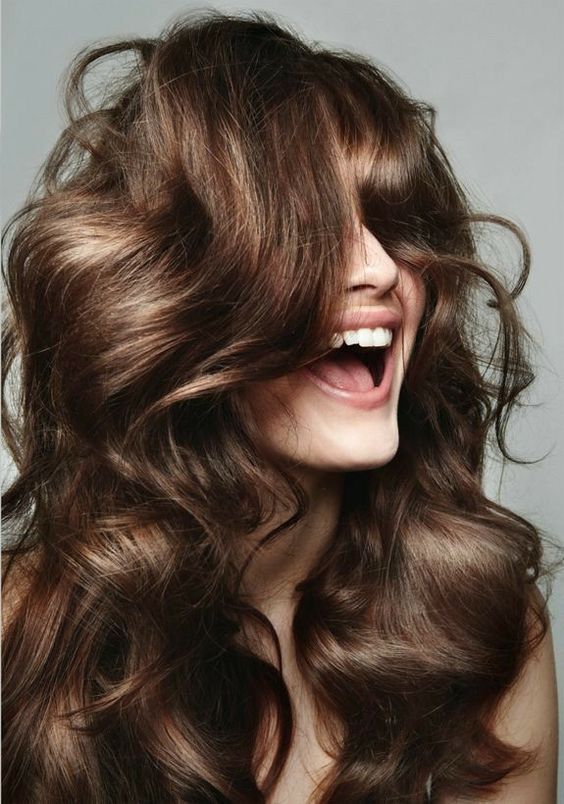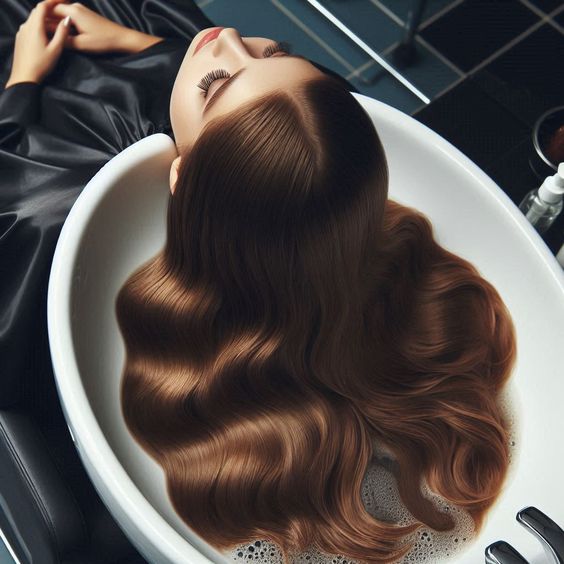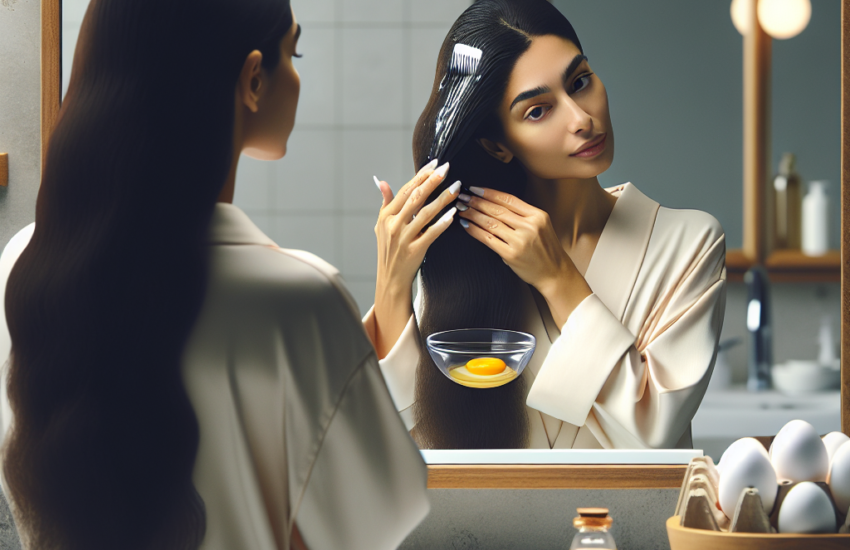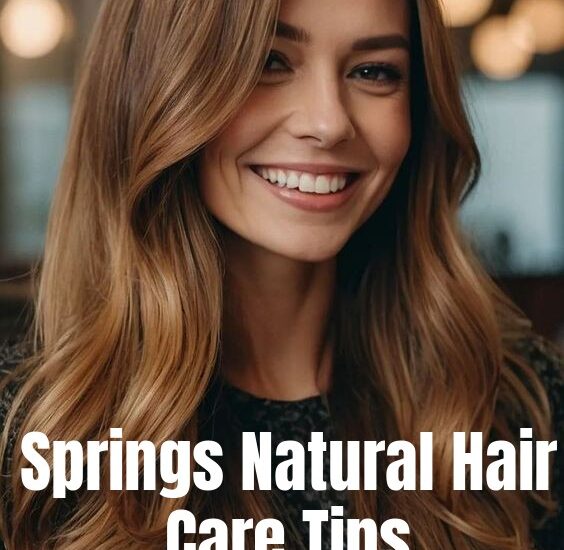9 Proven Hair Care Tips for Damaged Hair!
Deep condition your hair regularly and avoid excessive heat styling. Trim split ends frequently to promote healthy growth.
Damaged hair requires special care to restore its health and vitality. Regular deep conditioning treatments help replenish moisture and repair damage. Limiting the use of heat styling tools can prevent further harm. Opt for gentle, sulfate-free shampoos and conditioners to maintain your hair’s natural oils.
A balanced diet rich in vitamins and minerals can also support hair health from within. Trimming your hair every 6-8 weeks removes split ends, encouraging stronger growth. Avoid harsh chemical treatments and opt for natural hair masks to nourish your strands. Protect your hair from environmental damage by wearing hats or using UV-protection sprays. With consistent care, you can revive your damaged hair and keep it looking vibrant. Let’s explore the Best Hair Care Tips for Damaged Hair!
Common Causes Of Hair Damage
Damaged hair is a common problem faced by many. Understanding the causes and addressing them is key to restoring healthy locks. This guide will help you identify the common causes of hair damage and provide effective Hair Care Tips for Damaged Hair!

Heat Styling
Heat styling tools, such as flat irons, curling irons, and blow dryers, are major culprits in hair damage. High temperatures can weaken hair strands, making them prone to breakage.
Signs of heat damage include:
- Split ends
- Dryness
- Frizz
- Brittle texture
To minimize damage, always use a heat protectant spray. Limit the use of heat styling tools to twice a week. Opt for lower temperature settings to reduce the risk of damage.
Here is a quick comparison of common heat styling tools:
| Tool | Temperature Range | Damage Level |
|---|---|---|
| Flat Iron | 300-450°F | High |
| Curling Iron | 200-400°F | Medium |
| Blow Dryer | 100-300°F | Low |
Chemical Treatments
Chemical treatments like hair coloring, perming, and relaxing can significantly damage hair. These processes alter the hair’s natural structure, making it weaker and more vulnerable.
Common effects of chemical treatments include:
- Loss of moisture
- Increased porosity
- Breakage
- Scalp irritation
To protect your hair, limit chemical treatments to once every few months. Use deep conditioning treatments regularly to maintain moisture levels. Always seek a professional stylist for chemical procedures to minimize risks.
Here are some Hair Care Tips to protect your hair from chemical damage:
- Use sulfate-free shampoos
- Apply hair masks weekly
- Avoid overlapping treatments
Environmental Factors For Hair Damage
Environmental factors such as sun exposure, pollution, and harsh weather can contribute to hair damage. UV rays from the sun can strip hair of its natural oils, causing dryness and brittleness.
Pollution can lead to buildup on the scalp and hair, making it dull and lifeless. Cold weather can cause the hair cuticle to lift, leading to moisture loss.
To protect your hair from environmental damage:
- Wear a hat or use a UV protectant spray when outdoors.
- Wash your hair regularly to remove pollutants.
- Use a humidifier during winter months to maintain moisture levels.
Here is a simple routine to combat environmental damage:
| Step | Action |
|---|---|
| 1 | Apply UV protectant spray before going out. |
| 2 | Wash hair with a gentle shampoo after exposure. |
| 3 | Deep condition hair once a week. |
| 4 | Use a silk scarf or hat to protect hair. |
Signs Of Damaged Hair
Taking care of damaged hair can be challenging. Signs of damaged hair include brittleness, split ends, and lack of shine. Understanding these signs can help you choose the right treatments. Follow these tips to improve the health of your hair.
Brittleness
Brittleness is a common sign of damaged hair. Brittle hair feels rough and breaks easily. This happens because the hair loses its natural moisture. Here are some ways to manage brittleness:
- Use a moisturizing shampoo and conditioner.
- Avoid using heat styling tools too often.
- Apply a leave-in conditioner to keep hair hydrated.
Another way to reduce brittleness is by using natural oils. Oils like coconut and argan oil can penetrate the hair shaft. This helps to restore moisture from within. Apply the oil to your hair once a week.
Eating a balanced diet also helps. Foods rich in vitamins and minerals strengthen hair from the inside. Include foods like eggs, nuts, and leafy greens in your diet.
Split Ends
Split ends occur when the tips of your hair become frayed. This usually happens due to excessive styling or chemical treatments. Regular trims can help manage split ends. Here are some other tips:
- Use a wide-tooth comb to detangle your hair.
- Apply a hair serum to protect the ends of your hair.
- Avoid harsh chemicals like bleach and perms.
Deep conditioning treatments can also help. These treatments nourish the hair and prevent further damage. Use a deep conditioner once a week for best results.
Protective hairstyles can also reduce split ends. Styles like braids and buns keep the ends tucked away. This minimizes exposure to damage.
Lack Of Shine
Lack of shine is another sign of damaged hair. Hair loses its shine when the cuticle is damaged. This can make your hair look dull and lifeless. Here are some ways to bring back the shine:
- Rinse your hair with cold water after washing.
- Use a shine-enhancing serum or spray.
- Limit the use of heat styling tools.
Another tip is to use clarifying shampoos. These shampoos remove buildup from hair products. Use a clarifying shampoo once a month.
Healthy eating also plays a role. Foods rich in omega-3 fatty acids can improve hair’s shine. Include fish, flaxseeds, and walnuts in your diet.
Gentle Washing Techniques
Damaged hair needs extra care. Using gentle washing techniques helps restore its health. Simple changes can make a big difference. These Hair Care Tips for Damaged Hair will guide you to healthier hair.

Choosing The Right Shampoo
Shampoos can affect hair health. Choose a shampoo that is sulfate-free. Sulfates can strip natural oils. Look for shampoos with natural ingredients. Ingredients like aloe vera, coconut oil, and argan oil are beneficial. They help nourish and repair damaged hair.
Also, avoid shampoos with harsh chemicals. These can worsen hair damage. Opt for shampoos that are gentle and moisturizing. Check labels for hydrating properties. These types of shampoos will help keep your hair soft and smooth.
| Good Ingredients | Bad Ingredients |
|---|---|
| Aloe Vera | Sulfates |
| Coconut Oil | Parabens |
| Argan Oil | Silicones |
Always read the ingredient list. This helps in choosing the right product. Your hair will thank you for it.
Frequency Of Washing
Washing your hair too often can cause more damage. Wash your hair 2-3 times a week. This helps maintain natural oils. Natural oils keep hair healthy and shiny. Over-washing strips these oils, leading to dryness.
Consider your hair type. Dry hair needs less washing. Oily hair may need more frequent washing. But, avoid washing daily. Use a dry shampoo between washes. This helps keep hair fresh without stripping oils.
Also Read: 4 Best Hair Growth Oil To Restore Your Hair Naturally!
Here are some tips to follow:
- Use lukewarm water. Hot water can damage hair.
- Be gentle. Avoid rough scrubbing.
- Rinse thoroughly. Make sure no shampoo residue is left.
Following these tips helps in maintaining hair health. Gentle washing techniques are key to caring for damaged hair.
Deep Conditioning Methods
Damaged hair can be a real struggle. It often looks dull and feels dry. Deep conditioning methods are essential to restore and maintain your hair’s health. This blog post will explore effective deep conditioning methods for damaged hair. These methods include hydrating masks and leave-in conditioners.
Hydrating Masks
Hydrating masks are a great way to nourish damaged hair. They penetrate deep into the hair shaft to provide moisture and nutrients. Here are some popular ingredients you can find in hydrating masks:
- Argan Oil: Rich in fatty acids and vitamin E, it helps to soften and strengthen hair.
- Coconut Oil: Provides deep hydration and helps to reduce protein loss in hair.
- Shea Butter: Contains vitamins A and E, which help to repair damaged hair.
- Aloe Vera: Known for its soothing properties, it helps to moisturize and repair the scalp.
Using a hydrating mask once a week can make a big difference. Apply the mask to clean, damp hair and leave it on for at least 20 minutes. For best results, cover your hair with a shower cap to trap heat. This allows the mask to penetrate deeper into the hair shaft. Rinse thoroughly with cool water to seal the hair cuticle.
Leave-in Conditioners
Leave-in conditioners are another excellent option for damaged hair. They provide continuous hydration and protection throughout the day. Here are some benefits of using leave-in conditioners:
- Moisture Retention: Helps to keep your hair hydrated for longer periods.
- Detangling: Makes it easier to comb through your hair, reducing breakage.
- Frizz Control: Helps to tame frizz and smooth the hair cuticle.
- Heat Protection: Protects your hair from heat damage caused by styling tools.
To use a leave-in conditioner, apply a small amount to damp hair. Focus on the mid-lengths and ends of your hair, where damage is most likely to occur. Avoid applying too much product near the roots to prevent greasiness. You can use a leave-in conditioner daily or as needed, depending on your hair’s condition.
Also Read: 6 Vitamins And Supplements Fixes Hair Loss And Thinning
Protective Styling
Damaged hair needs extra care and protection. Protective styling helps to shield your hair from further damage. This blog will guide you through the best protective styles and how to avoid styles that can harm your hair.
Braids And Buns
Braids are a great protective style. They keep your hair neat and reduce the need for frequent styling. Buns also protect your hair ends. They prevent split ends and breakage. Here are some tips for braiding and making buns:
- Moisturize your hair before braiding.
- Use a leave-in conditioner to keep hair soft.
- Do not braid too tightly to avoid breakage.
Buns are another simple protective style. They can be high or low. Both types keep hair ends tucked away. Here are some easy steps:
- Detangle your hair gently before making a bun.
- Use a soft hair tie to secure the bun.
- Wrap a scarf around your bun for added protection.
Avoiding Tight Styles
Tight styles can cause hair damage. They can lead to breakage and hair loss. Here are reasons to avoid tight styles:
- Tight styles pull on your hair roots.
- This pulling can lead to traction alopecia.
- Hair strands can snap under too much tension.
Choosing looser styles helps protect your hair. Here are some alternative styles:
- Loose braids are gentle on the scalp.
- Low ponytails reduce tension on hair roots.
- Twists are another gentle option.
Remember to always listen to your hair. If a style feels too tight, adjust it. Protecting your hair is key to keeping it healthy and strong.
Nourishing Ingredients
Damaged hair needs special care and attention. Using the right nourishing ingredients can help restore its health. This blog will explore some of the best ingredients for damaged hair.
Natural Oils
Natural oils can work wonders on damaged hair. They provide deep conditioning and nourishment. Coconut oil is one of the best options. It penetrates the hair shaft and reduces protein loss. Argan oil is another excellent choice. It is rich in vitamin E and essential fatty acids. These nutrients help to hydrate and soften the hair.
Jojoba oil is also very beneficial. It mimics the natural oil produced by the scalp. This helps to balance oil production and adds moisture. Olive oil is great for adding shine and reducing frizz. It contains antioxidants that help repair damage. Here is a table summarizing the benefits of these oils:
| Oil | Benefits |
|---|---|
| Coconut Oil | Reduces protein loss, deep conditioning |
| Argan Oil | Hydrates, softens hair, rich in vitamin E |
| Jojoba Oil | Balances oil production, adds moisture |
| Olive Oil | Adds shine, reduces frizz, repairs damage |
Protein Treatments
Protein treatments are essential for damaged hair. They help to strengthen and repair the hair shaft. Keratin treatments are very effective. They fill in the gaps in the hair cuticle, making it smoother. Egg masks are a great home remedy. Eggs are rich in protein and help to rebuild the hair structure.
Yogurt and honey masks are also beneficial. Yogurt contains lactic acid, which cleanses the scalp. Honey acts as a natural humectant, locking in moisture. Hydrolyzed protein products are available in stores. They contain proteins broken down into smaller molecules. This allows them to penetrate the hair shaft more effectively.
Here are some key points to remember about protein treatments:
- Strengthen and repair hair
- Fill gaps in the hair cuticle
- Egg masks for home treatment
- Yogurt and honey masks for moisture
- Hydrolyzed protein products for deep penetration
Minimizing Heat Damage
Damaged hair can be frustrating. It often feels dry and looks dull. Heat styling tools like blow dryers and flat irons can make things worse. Minimizing heat damage is key to healthier hair. Here are some essential tips to protect your hair from heat damage.
Heat Protectants
Heat protectants are essential for anyone using heat styling tools. These products create a barrier between your hair and the heat. This helps to keep your hair from getting too hot and becoming damaged. There are many types of heat protectants available. Some come in spray form, while others are creams or serums. Always apply a heat protectant before using any heat styling tool.
Here are some benefits of using heat protectants:
- Reduces heat damage by forming a protective barrier
- Adds shine to your hair
- Helps to lock in moisture
- Reduces frizz and makes hair more manageable
Using a heat protectant is simple. Spray or apply it evenly to your damp or dry hair. Make sure to cover all sections of your hair. After applying, you can proceed with your heat styling tool.
Lower Temperature Settings
Using lower temperature settings on your heat styling tools can greatly reduce hair damage. High temperatures can cause your hair to become dry and brittle. Most styling tools come with adjustable heat settings. Choose a lower setting to protect your hair. For fine or thin hair, a lower temperature is often enough to achieve the desired style. For thicker hair, you may need a slightly higher setting but avoid going too high.
Here is a guide for choosing the right temperature:
| Hair Type | Recommended Temperature |
|---|---|
| Fine or Thin Hair | 250°F – 300°F |
| Normal Hair | 300°F – 375°F |
| Thick or Coarse Hair | 375°F – 450°F |
Always start with the lowest temperature setting. Then gradually increase it if needed. Your hair will thank you for it. Lowering the heat setting can also extend the life of your hair styling tools. They won’t have to work as hard, reducing wear and tear.
Regular Trims
Damaged hair can be a significant concern for many people. It often looks dull, feels rough, and is prone to breakage. One effective way to manage damaged hair is through regular trims. Regular trims can help maintain the health of your hair and prevent further damage.
When To Trim
Knowing the right time to trim your hair is essential. Trimming every 6 to 8 weeks is a good rule of thumb. This frequency helps to remove split ends before they worsen. Some signs that indicate it’s time for a trim include:
- Split ends: Split ends can make your hair look frizzy and unhealthy.
- Difficulty styling: Damaged hair is hard to style and manage.
- Lack of volume: Hair that has lost its volume may need a trim.
For those with curly or textured hair, a trim every 8 to 12 weeks may be sufficient. Curly hair tends to be drier, so trimming less frequently can prevent excessive dryness. Monitoring your hair’s condition can help you decide the best time for a trim.
Benefits Of Regular Cuts
Regular haircuts offer numerous benefits for damaged hair. One major benefit is the prevention of split ends. Split ends can travel up the hair shaft, causing more damage. Trimming stops this process in its tracks. Other benefits include:
- Healthier appearance: Regular trims keep your hair looking fresh and healthy.
- Easier to manage: Trimmed hair is easier to style and less likely to tangle.
- Promotes growth: While trimming doesn’t speed up hair growth, it prevents breakage, allowing your hair to grow longer over time.
Trims also help in maintaining your hairstyle. If you have layers or a specific cut, regular trims keep your style looking sharp. Consistency in trimming can also help in training your hair to grow in a particular pattern. This is especially useful for those trying to grow their hair out or maintain a specific look.
Conclusion
Restoring damaged hair takes patience and care. Use these tips consistently for healthier, more vibrant locks. Prioritize gentle products and regular trims. Protect your hair from heat and harsh chemicals. With dedication, you can revive your damaged hair and enjoy a smoother, shinier mane.
Start your journey to beautiful hair today!



